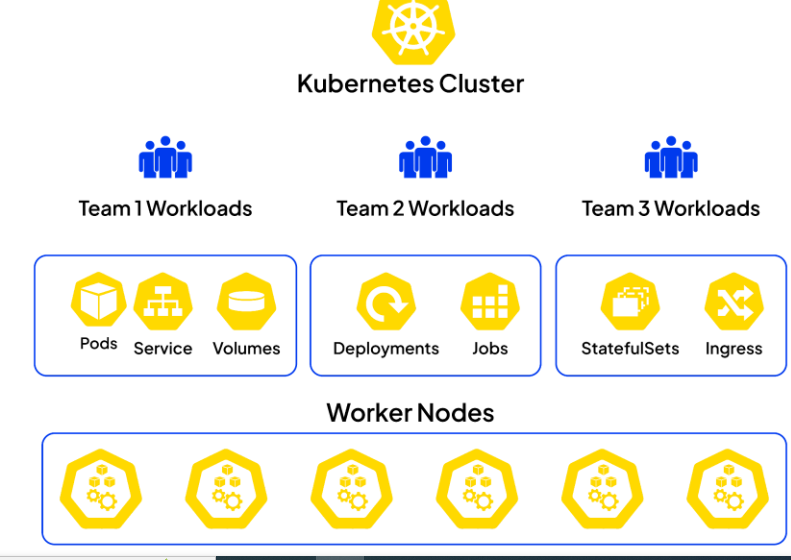A Guide To Choosing The Right Kubernetes Multi-Tenancy Approach
In the modern world of cloud infrastructure, kubernetes have emerged as a vital tool for orchestrating containerized applications. With its robust set of features, one concept that stands out is multi-tenancy.
This powerful capability enables multiple teams or individuals within an organization to share and utilize the same kubernetes cluster resources seamlessly. By leveraging multi-tenancy, organizations can achieve greater resource efficiency, improved collaboration, and enhanced scalability in their containerized environments.
This guide will help you navigate the process of selecting the most suitable kubernetes multi-tenancy approach for your organization.
Understanding Kubernetes Multi-Tenancy
Kubernetes multi-tenancy encompasses an architectural approach where a single kubernetes cluster is shared by multiple tenants, enabling them to utilize resources such as storage, networking, and CPU. While kubernetes does not inherently distinguish between end users and tenants, it still facilitates cost savings and simplifies administrative tasks, contributing to enhanced efficiency.
1: Soft Multi-Tenancy
Soft kubernetes multi-tenancy is commonly implemented in situations with a high level of trust among tenants. A prime example of such a scenario is when diverse teams within the same organization share a cluster. It is worth noting that while this approach offers advantages, it also carries potential risks if a tenant unintentionally affects the entire cluster due to a mistake.
2: Hard Multi-Tenancy
Hard kubernetes multi-tenancy, on the other hand, offers a more secure and isolated environment. Each tenant operates independently within the same kubernetes cluster. This approach is beneficial when tenants are external entities or when stricter security measures are required.
Implementing Kubernetes Multi-Tenancy
Implementing multi-tenancy in kubernetes involves creating and configuring tenants within a SaaS using a kubernetes deployment. After creating the namespaces (virtual clusters within the kubernetes cluster), it is crucial to implement the necessary controls to ensure proper isolation and resource allocation.
1: Multi-Tenancy with Namespaces
One fundamental way to implement multi-tenancy in kubernetes is by using namespaces. Each tenant gets their namespace, effectively isolating their workloads from others. However, this method requires careful management to ensure that the activities of one tenant do not negatively impact others.
2: Multi-Tenancy with Cluster Partitioning
Cluster partitioning is an alternative method for implementing multi-tenancy. It involves dividing the kubernetes cluster into smaller clusters, each assigned to a specific tenant. While this approach enhances isolation, it does introduce additional complexity and overhead.
Choosing The Right Approach
When choosing the optimal kubernetes multi-tenancy approach for your organization, there are several key considerations to remember. These include the level of trust among tenants, the need for resource isolation, administrative overhead, and cost implications.
If your organization enjoys a high level of trust among tenants and aims to minimize administrative burdens, soft multi-tenancy may be the most suitable option. On the other hand, if stricter isolation and enhanced security are paramount, hard multi-tenancy or cluster partitioning may be more appropriate choices.
A Guide To Choosing The Right Kubernetes Multi-Tenancy Approach – In Conclusion
Kubernetes multi-tenancy offers a flexible way to maximize resource utilization and minimize costs. However, choosing the right approach depends on your organization’s unique needs and circumstances. By understanding the different approaches and their implications, you can make an informed decision that best suits your organization’s requirements.





